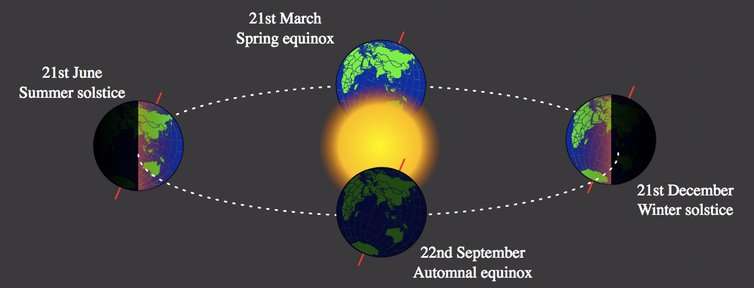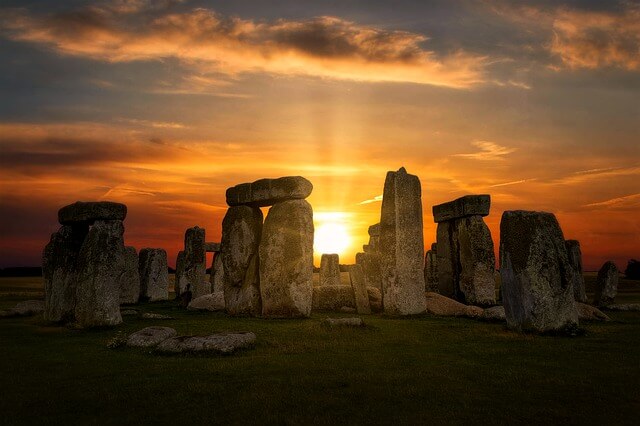Winter Solstice: Five things you should know about the shortest day of the year. Winter may start, but if you are ready to receive more sunlight, you will not have to wait much longer.
December 21 is the winter solstice: the shortest day and the longest night of the year here in the northern hemisphere of Earth.
As of Friday, the sun will stand for a few more seconds each day, indicating the start of our slow but steady march towards spring. But let’s not get ahead. Winter is just getting under way. Get more information about the solstice and why it is not the coldest day of the year in our scientific guide below.

1. What happens at the winter solstice?
The December solstice marks the exact moment when the most direct rays of the sun reach their southernmost point south of the equator, along the Tropic of Capricorn, at 23.5 degrees south latitude. The solstice date and time change slightly each year, but this year’s solstice occurs at 11:28 a.m., Eastern time, on December 21.
The reason why we have a solstice, and seasons, is because the Earth is tilted at its axis of rotation by approximately 23.5 degrees. This inclination causes each hemisphere to receive different amounts of sunlight throughout the year as our planet orbits the sun. In the northern hemisphere, we see that the sun takes its lowest and shortest path through the southern sky, and at local noon, its shadow will be the longest of the year.
The word “solstice” comes from the Latin words sol sistere, which means “still sun”. At the December solstice, the daily movement towards the south of the sun in the sky seems to stop, and we see the sun rise and settle at its southernmost points on the horizon before reversing the direction. It is an annual astronomical inflection point that humans have celebrated for millennia (just think of Stonehenge or the ancient Mayans).
2. How many hours of daylight are there in the winter solstice?
The amount of daylight you will see at the solstice depends on your latitude or distance from the equator. The map below, created by Alaska-based climatologist Brian Brettschneider, shows how daylight hours vary widely in North America on the shortest day of the year.
In the Lower 48, the sun rises for more than 10 hours through Florida and south Texas, while states in the north reach nine hours of daylight. Here in Washington, DC, the sun rises for 9 hours and 26 minutes (it rises at 7:23 a.m. and sets at 4:49 p.m.).
Of course, our long winter night pales in comparison to Alaska, where the sun barely rises above the horizon for three or four hours in much of the Last Frontier. North of the Arctic Circle – at 66.5 degrees north latitude – the sun never rises, and darkness prevails when the Earth rotates on its axis.
3. When is the sunrise and sunset?
The exact times of sunrise and sunset depend on two things: your latitude and geographic location within your time zone.
Here are two maps that show the time of sunrise and sunset in North America. Both take into account the effect of time zones and latitude, hence the interesting mosaic of colors.
The first map shows sunrise times in North America. In most of the country, including the district, the sunrise on the winter solstice is after 7 a.m. The golden areas do not see the sunrise until after 7:30 a.m., and in the green areas, the sun does not rise until after 8 a.m.
The following map shows the time of sunset. Many parts of the Lower 48 see the sunset before 5 p.m. at the winter solstice. In the bright green areas, which include much of the Pacific Northwest and New England, the sun disappears below the horizon before 4:30 in the afternoon. Some parts of Maine even see the sunset at 3 o’clock! Only a handful of states, including Florida and Texas, see the sunset after 5:30 p.m. on the shortest day of the year.
If you are tired of these dark nights, the good news is that our first sunsets have already been left behind. In fact, it has gradually been getting lighter at night for more than a week.

4. Wait a minute, the earliest sunset and the last sunrise do not occur at the solstice.
We are going to erase the record: the winter solstice marks the shortest daylight period in the northern hemisphere. However, it is never the day of the last sunrise or the earliest sunset. This astronomical peculiarity occurs due to the 23.5 degree inclination of the Earth and our elliptical orbit around the sun.
In this next map (and in this table) you can see that most places see their earliest sunset two weeks before the solstice, while the last sunrise is not until the beginning of January. So do not expect brighter mornings soon.